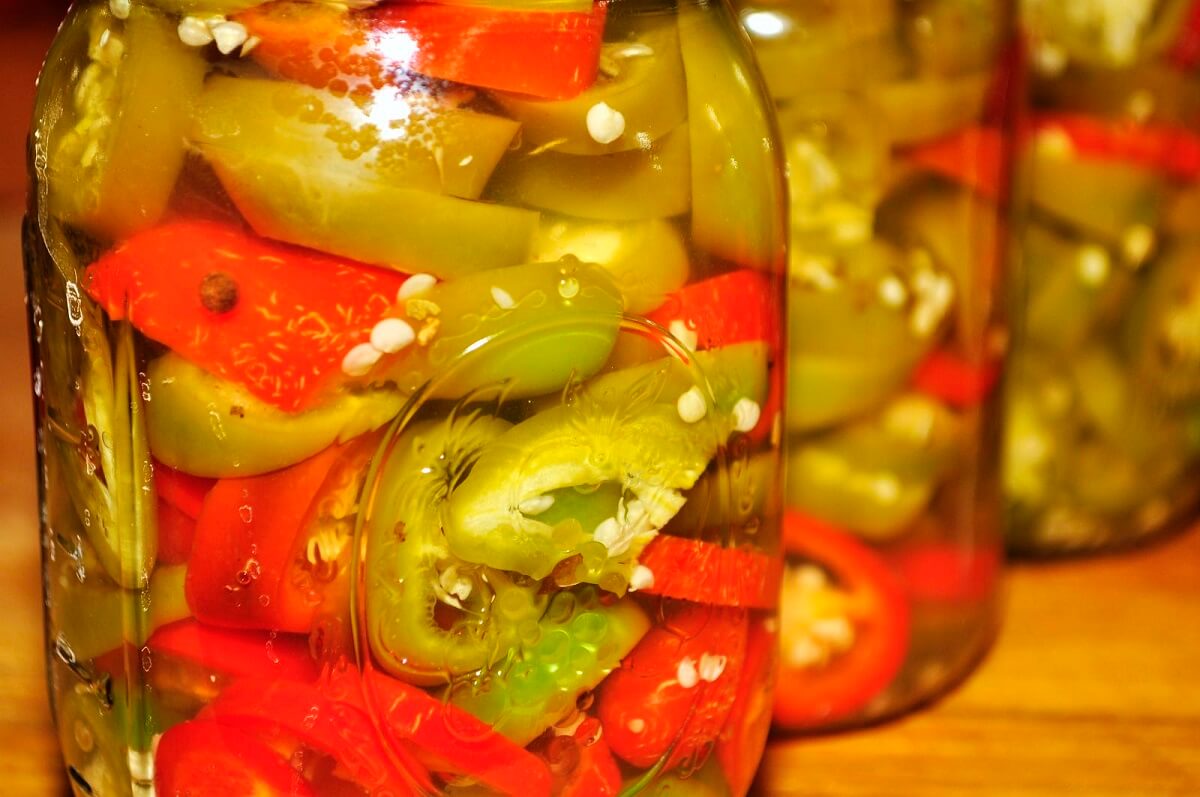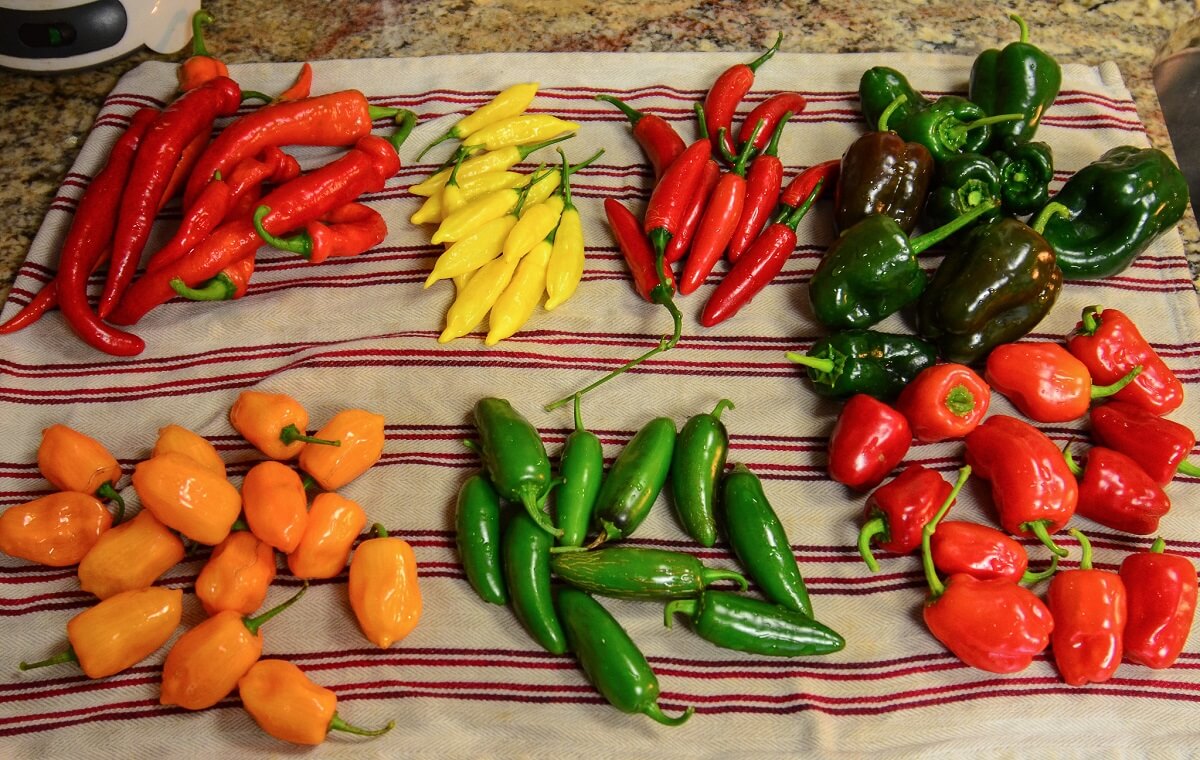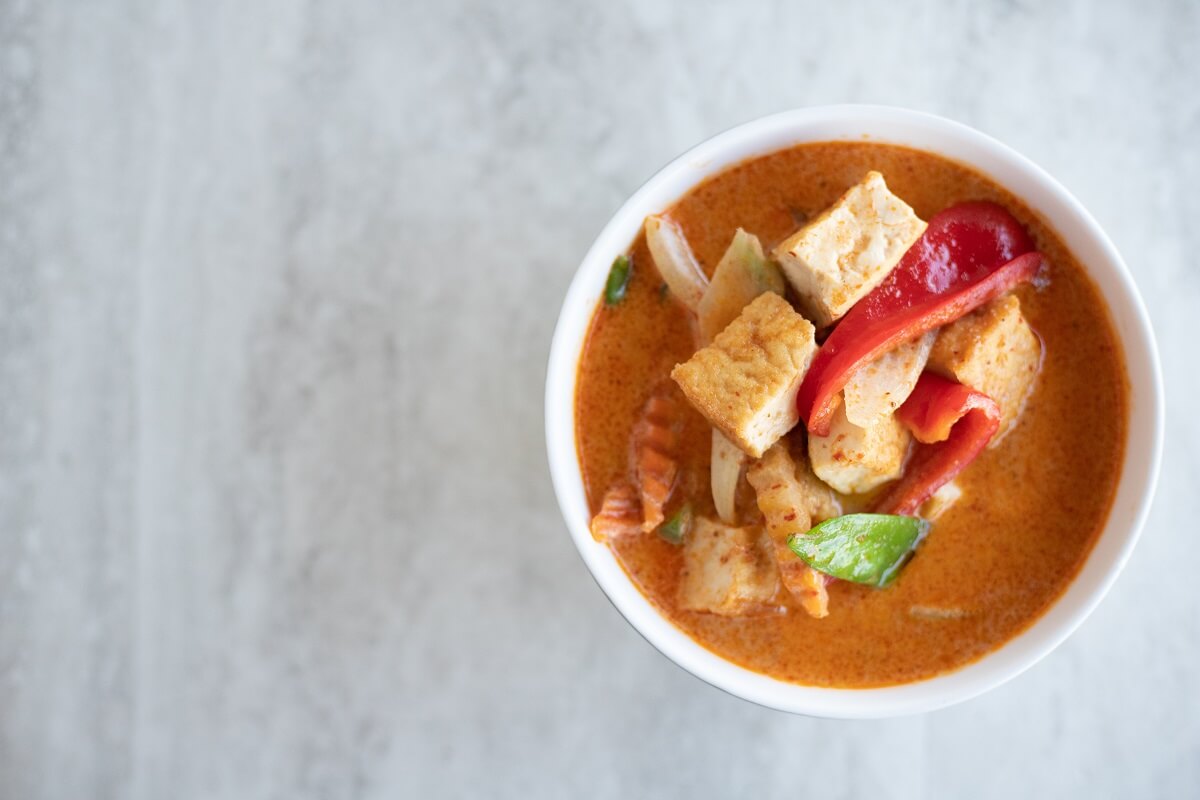Whether you overplanted peppers in your garden this year — or stockpiled a bunch that were on sale at the store — don’t let them go to waste! After you’ve made your red pepper soup and spicy jalapeno salsa, consider canning the rest of those peppers to store through the fall and winter.
If you enjoy preserving and pickling relishes, jellies, jams, and chutneys from the bounty of your homestead garden, here are a few old-fashioned, farm-style recipes to pickle the sweetness and spice of peppers all year long.
Canning Tools Required For All Recipes
- Metal ladles
- Canning jars, lids, rings
- Large canning kettle with a rack
- Canning tongs
- Canning funnel
- Nonmetallic spatula
- Large stainless-steel pot for cooking pickle mixture
- Large pot for sterilizing jars, lids, rings
- Cloth towels
Fiesta Pickled Peppers

A colorful and spicy blend of banana, serrano, jalapeno, sweet baby bell peppers, garlic, and onion, this pickled pepper medley is the perfect complement to a summer salad, as a garnish to a meat dish or cheese platter, or served on the side with a sandwich.
Related Post: Growing Peppers
This recipe makes about 8 pints of pickles depending on the size of the peppers. Consider putting up some of the peppers in half-pint jars. They’re the perfect size for gift giving.
Ingredients
- 2 pounds multi-colored sweet baby bell peppers
- 1 pound banana peppers
- ½ pound jalapeno peppers
- ½ pound serrano peppers
- 3 small cloves of garlic, diced
- 8 c. distilled white vinegar
- 4 c. water
- 1 white onion, diced
- 8 c. granulated white sugar
- 1 c. organic honey
- 1 tsp. ground cloves
- 12 white peppercorns
- 2 tbsp. pickling salt
Directions
- Rinse and prep the peppers, onion, and garlic for canning, removing pepper stems, slicing lengthwise, and cutting pepper strips into 1-inch pieces.
- Place jalapeno, banana, and serrano pepper pieces in a large pot. Add onion, garlic, vinegar, salt, spices, honey, and water.
- Bring the mixture to a boil over medium heat, stirring well.
- When the mixture boils, reduce heat and simmer for 15 minutes on low.
- Ladle pepper mixture into hot, sterile jars, filling to the top with hot spiced liquid, allowing ¼-inch headspace.
- Run a nonmetallic spatula around the inside of the jar to remove air bubbles.
- Wipe off the rim of the jars with a clean cloth dipped in boiling water.
- Place hot, sterilized lids on the jars, securing finger tight. When sterilizing lids, allow them to remain in the boiling water for a few minutes to soften the rubber band and help ensure a tight seal.
- Place filled and secured sealed jars in the rack of a large canning kettle. Fill the kettle with enough water to cover the jars. Bring water to a hard boil and boil for 20 minutes.
- Using canning tongs, remove the jars from the boiling water (protect your hands using potholders or a dry towel), invert the jars on a rack to cool.
- As the jars cool, you will hear a ping as the lids click down in the center, indicating a good seal.
- When jars have cooled overnight, check the seals. If any jar did not seal properly, refrigerate for consumption within two weeks.
- Polish sealed jars of pickled peppers, label, date, and store.
- Refrigerate after opening.
Sweet and Spicy Hot Red Pepper Jam
This sweet and spicy hot red pepper jam is handy to have on hand to use as a last-minute party appetizer. Spoon the pepper jam over a mound of cream cheese, and serve it with tortilla chips. The intense ruby-red color and zesty flavor is the perfect complement to a cold turkey sandwich.
Making sweet strawberry pepper jam is a simple process. The fruit is cooked down until it thickens. This process can be done with or without pectin. Sweet strawberries, combined with the spicy flavor of habanero and jalapeno peppers, is a delightful, mouth-watering surprise and the perfect glaze for oven-baked pork chops.
Ingredients
- 5 c. fresh strawberries, cut in halves
- 1 c. diced fresh jalapeno peppers
- ½ c. diced fresh habanero or ghost peppers
- ½ c. freshly squeezed lemon juice
- 6 c. of white granulated sugar
- 1 c. organic honey
- 2 oz. fruit pectin (optional)
Directions
- Prep and dice peppers and set aside.
- Juice the lemon and set aside.
- Wash and remove stems from strawberries. Half or quarter the berries into a bowl, then crush to release the juice.
- Place diced peppers, crushed strawberries, lemon juice, and pectin (optional) in a large saucepan.
- Bring the mixture to a slow boil, stirring constantly.
- Add sugar and honey.
- Reduce heat and simmer mixture for 5 minutes.
- While jam mixture is simmering, sterilize a dozen half-pint jars, lids, and rings.
- Ladle the mixture into hot, sterilized jars filling within a ¼ inch from the top.
- Wipe jar rims with a clean cloth dipped in boiling water to remove residue.
- Top with hot, sterilized lids, add the ring, and finger tighten.
- Place jars in the rack of a large canning kettle. Cover with water and bring to a boil.
- Place a cover atop the canning kettle and boil for 15 minutes.
- Using canning tongs, remove jars from the kettle and invert on a cloth-covered surface to cool.
- Allow jars to cool overnight.
- Check that all jars are sealed properly, and label and date for storage in a cool, dark place.
Create Your Own Hot Pickled Pepper Recipe
Peppers of any variety can be used to make homemade pickled peppers, salsa, jams, jellies, dipping sauce, and glazes. Whether sweet, mild, or hot, peppers enhance the flavor of a diverse array of culinary dishes in countries around the world. There are more than a hundred different varieties of hot peppers. Consider being creative and canning your own unique signature hot sauce or barbecue glaze.

A few of the varieties found in my pepper patch include sweet bells, yellow wax, sweet cherry, sweet banana, and Hawaiian mini chili peppers. This summer’s crop of peppers was abundant, and I harvested bushels of peppers. Once I canned my favorite pepper recipes, I discovered how fun it was to experiment with the excess from the garden.
Related Post: Companion Planting For Peppers
Try pairing cucumbers and peppers for a dynamite hot dog relish, or banana peppers and peaches to glaze a pork roast. You are only limited by your imagination and the gifts of the garden.
How To Choose The Best Peppers For Pickling
Be picky about which peppers you decide to use for canning. Do not use diseased or soft fruit. Avoid bruised, overripe, or under-ripe peppers as they can affect the quality of the final product. All varieties of peppers should be at their peak of flavor and freshness to ensure the best pickled peppers.
Gather peppers from the garden in the cool of the early morning, avoiding peppers that are pliable, soft, shriveled, or faded in color. No matter the variety, the shortest time from pick to pack ensures the highest quality of pickled or canned pepper products.
Small peppers may be left whole, however, slash a slit or two in each pepper before processing. Quarter large peppers, and remove the core and seeds.
More Pepper Recipes For Your Harvest
Add a bit of spice to your life with these zesty pepper taste bud teasers.
Red Pepper And Pear Soup

A sizzling steak served with a salad of fresh greens, peaches, and peppers are sure to please every palate.
Peaches And Peppers
For a quick and easy appetizer to complement any wine, serve raspberry jalapeno jelly, slices of aged sharp cheddar, and an assortment of crispy crackers.
Raspberry Jalapeno Jelly
Try this perfect side dish to serve with a rack of barbecue ribs hot off the grill.
Tips For Canning Peppers
- Always, and I mean always, wear rubber gloves or disposable plastic gloves when cutting or handling hot peppers. Do not touch your eyes, nose, or mouth. The juice from hot peppers is caustic to skin.
- You can turn down the heat in any pepper recipe by substituting an equal amount of sweet peppers (such as red, yellow, or orange baby bells) for hot peppers.
- No matter if you are pickling or preserving jalapenos, habaneros, chiles, sweet bells, banana peppers, or pimentos, it takes an average of 1 pound of fruit per pint.
- You can reuse glass canning jars from previous years as long as they are clean and free from nicks or chips. Wash thoroughly in hot soapy water, rinse, and rinse again in boiling water to sterilize.
- Although you can reuse canning jars, it is critical to use new lids and rings to ensure a safe seal.
- When canning or pickling peppers, or any vegetable canned with vinegar or lemon juice in the recipe, do not use aluminum cookware. Always use an enameled, ceramic, or stainless-steel cooking pot.
- Use a high-quality vinegar with 5 percent acidity, only nonionized, granulated pickling or canning salt, and fresh spices. Do not use table salt, as noncaking ingredients in table salt turn vinegar cloudy.
References:
- Selecting, Preparing and Canning Vegetables: Peppers, National Center for Food Preservation
- Let’s Preserve: Peppers, PennState Extension
- Making Pickled Peppers at Home, Colorado State Extension
- The Big List of Hot Peppers, Cayenne Diane










































Leave a Reply